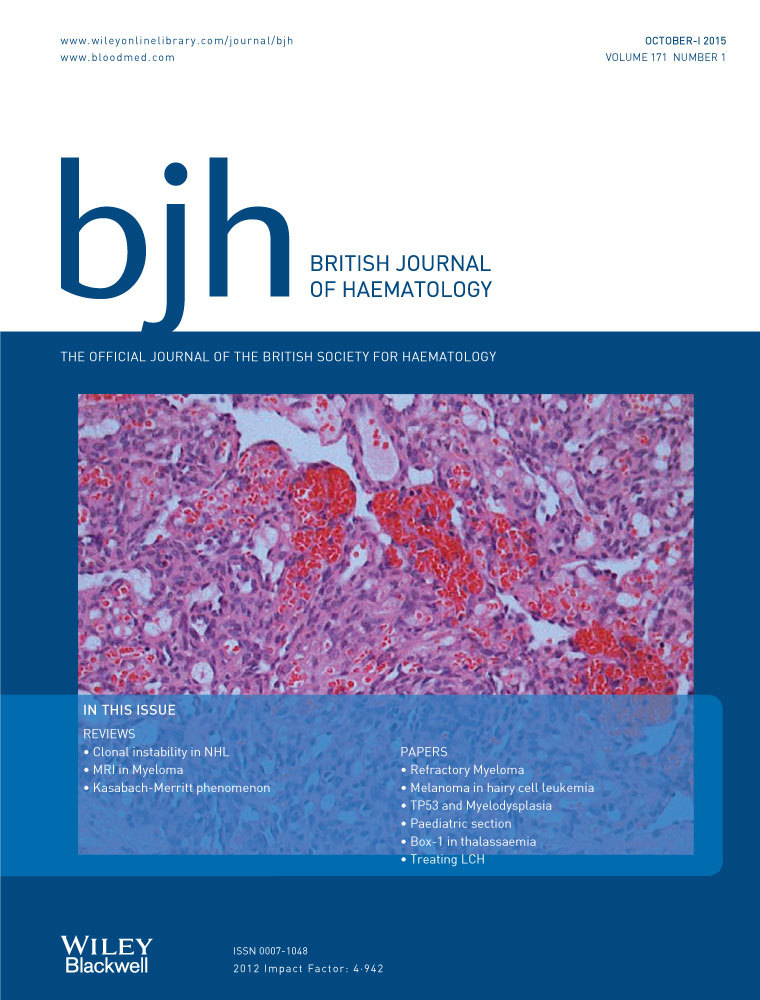Treatment of Langerhans cell histiocytosis: it is time to learn from the past: response to Minkov and Rodriguez-Galindo
We appreciate the discussion of our recent report of an institutional retrospective experience with cytarabine in patients with Langerhans cell histiocytosis (LCH) (Simko et al, 2015). We agree with the major conclusion of Drs Minkov and Rodriguez-Galindo that it is only through proper design of prospective studies that optimal standard of care can be defined. The purpose of our report was to highlight the promising results that signal the potential efficacy of cytarabine in treating LCH which, in our opinion, merits further exploration in a definitive prospective randomized trial.
In their report, Minkov and Rodriguez-Galindo make a statement that the appropriate question is not to ‘dethrone or not to dethrone’ the current front-line standard of care (vinblastine/prednisone), but how to meet the needs of patients who fail standard treatment. We respectfully offer an alternative view that it would not be as necessary to focus on the needs of patients who fail if initial therapy were more effective. Over 50% of patients who require systemic chemotherapy for LCH will not be cured by vinblastine/prednisone (Gadner et al, 2013). While relapses are rarely fatal and may be effectively treated with salvage therapy, there are risks to any extended chemotherapy and duration of active disease is related to risks of long-term morbidity (Haupt et al, 2004). The current approach of expecting and tolerating relapse in LCH may be influenced by the historical identity crisis leading to the frequent debate of LCH as an immune versus neoplastic disorder. Recent data demonstrating recurrent MAPK pathway mutations in clonal myeloid precursors in LCH support classification as a myeloid neoplasia (Badalian-Very et al, 2010; Berres et al, 2014; Brown et al, 2014; Chakraborty et al, 2014). An optimal therapy would therefore eradicate the neoplastic clone with minimal toxicity.
Large cooperative efforts, such as those of the Histiocyte Society LCH IV study, are essential to define optimal therapies through randomized phase III trials of comparable patient groups. By our estimation, fewer than 10% of all potentially eligible patients in the US were treated on the LCH III trial. With an incidence comparable to paediatric acute myeloid leukaemia or Hodgkin lymphoma, there is clearly room for multiple cooperative groups and consortia to test promising strategies for patients with LCH in parallel. Cytarabine is generally well-tolerated at doses described in this study, inexpensive, and does not require central venous accesses. We propose that our pilot data support consideration of a trial to prove whether or not it is in fact safer and more effective than vinblastine/prednisone for patients with newly diagnosed LCH. Meanwhile, we fully support enrolment on LCH IV whenever possible, as the question of extended therapy (1 year vs. 2 years of vinblastine/prednisone) may also move us a step closer to the goal of defining optimal front-line therapy for LCH.
Acknowledgements
The Texas Children's Cancer Center Histiocytosis Program is supported by the HistioCure Foundation. Additional grant support includes NIH R01 CA154489 (CEA, KLM), NIH SPORE in Lymphoma P50CA126752 (CEA), St. Baldricks Foundation (CEA, for the North American Consortium for Histiocytosis), and the Dan L. Duncan Cancer Center support grant (P30CA125123).
Author contributions
KLM and CEA contributed to this manuscript equally.
Conflict of interest
The authors have no conflict of interest to disclose.




